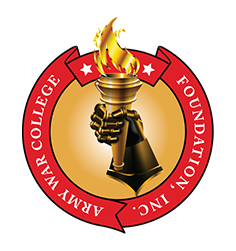Dan Brouillette, CNSP ’14
Here is some of the COVID-19 work we’re doing at the U.S. Department of Energy. The COVID-19 High Performance Computing Consortium is a unique public-private effort spearheaded by the White House Office of Science and Technology Policy (OSTP), the U.S. Department of Energy (DOE), and IBM – along with a growing group of government, industry, and academic leaders – to unleash the power of America’s supercomputing resources to combat COVID-19. This public-private partnership includes the biggest players in advanced computing from government, industry, and academia. At launch, the consortium included five DOE laboratories, industry leaders like IBM, Microsoft, Google, and Amazon, and preeminent U.S. universities like MIT, RPI, and UC San Diego. Never before has a group of public and private entities–federal government, industry, and academic leaders–organized so quickly and made so much time available on so many of the world’s most powerful computers at no cost to support the community of researchers tackling COVID-19’s big problems. The DOE owns the world’s fastest supercomputers, and they are enabling researchers to quickly understand how the disease spreads in communities as conditions change on the ground. They also allow researchers to rapidly identify targets on the virus and, within humans, to more quickly screen potential pharmaceutical treatments and develop a future vaccine. And they will allow researchers to predict how the virus may change as it spreads through the population. This computing capacity (combined with Artificial Intelligence (AI) tools) has allowed researchers to scan billions of drug compounds and quickly identify approximately 70 that have a positive effect on the virus. Currently, six DOE National Labs are involved in the Consortium: Argonne, Lawrence Berkeley, Lawrence Livermore, Los Alamos, Oak Ridge, and Sandia National Laboratories. In addition to the computational modeling and simulation described above, our labs are using their suite of X-ray light sources and neutron sources to rapidly make molecular structure determinations of key proteins from SARS CoV-2, the virus that causes COVID-19. These structural data are an essential input for many of the computational studies already underway. Our labs will continue working with collaborators from across the country to leverage these world-leading facilities towards better understanding this virus. DOE’s labs are also helping to tackle supply chain bottlenecks. A new 15-laboratory task group, guided by input from both public and private stakeholders, has identified three health care supply chain bottlenecks, and has assigned teams to rapidly address the issues, which include surgical masks and face shields, ventilator systems, and consumables (e.g., swabs, test kit components) used in COVID-19 testing. Efforts are currently underway to use additive manufacturing to rapidly prototype test articles. Once the prototypes are validated, the task force will assess production considerations, including design and manufacture of tooling, material selection, and supply chain engagement. The primary focus will be on the development of dies and molds that can be rapidly and broadly distributed to private companies experienced in the manufacturing of health supplies, using protocols that meet regulated health care standards.
Mr. Dan Brouillette
Commandant’s National Security Program (CNSP) 2014
U.S. Secretary of Energy
Washington, DC

